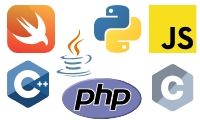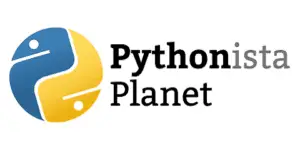Why are there so many programming languages? I’m sure that most of the programmers out there have asked this question at least once in their career. If you’re wondering why there are so many different programming languages out there, let me help you answer your question.

We have a lot of programming languages available such as Python, Java, C, Javascript, PHP, C++, Swift,… the list goes on and on. But aren’t they all the same? Why can’t we have a single programming language to do all the tasks? It would have been very easy if we had only one language, right?
We have different programming languages available since different languages were invented to solve different problems. Each language has its own unique characteristics that would make it suitable to solve a particular problem.
Let me clarify things with some examples. Here is a table listing out the most popular programming languages and the particular reason behind their invention.
| Programming Language | Purpose of invention (or use cases) |
|---|---|
| Python | Python was invented by Guido van Rossum in 1991 and developed by Python Software Foundation. The goal behind the invention of this language was to simplify writing and reading code. Most programming languages were using special characters for separating code blocks, and hence, the readability of those languages was pretty bad. Python introduced the use of indentation with its notable use of significant whitespace to enhance code readability [Source]. |
| Javascript | Javascript was created by Brendan Eich in 1995 as a programming language for the web. The goal was to make it a glue-language for the web designers and programmers who were building web content from components such as images, plugins, and Java applets. Later, Javascript became very popular, and it is being used in various applications [Source]. |
| Java | Java was created at Sun Microsystems, Inc., by James Gosling & team in 1991 to solve the problem of platform dependency. Back in the old days, a program written on one operating system was not capable of running on another operating system. Java was introduced as a platform-independent language that lets programmers write once, run anywhere (WORA) to have as few implementation dependencies as possible. Programs written in Java gets compiled to bytecode that can run on any Java virtual machine (JVM) regardless of the underlying computer architecture [Source]. |
| PHP | PHP was invented in 1994 by Rasmus Lerdorf to create web applications. Rasmus wrote many common gateway interface (CGI) programs in C to maintain his personal homepage, by working with web forms and communicating with databases. That is why this language was called Personal Home Page(PHP). Later, it was renamed to Hypertext preprocessor [Source]. |
| Swift | Apple invented Swift language in 2014 to create the best available language for uses, ranging from systems programming to mobile and desktop apps, scaling up to cloud services. Swift is the best option available for iOS app development. It was designed to make writing and maintaining correct programs easier for the developer. It is safe, fast (that’s why the name swift), and expressive [Source]. |
| C | C programming language was created by Dennis Ritchie in the 1970s to make utilities running on Unix. Later, it became very popular and was used in several applications, including the re-implementation of the kernel of the Unix operating system. The C language is pretty close to the hardware, and hence, it was fast in execution. Yet, the language was simple enough for developers to do tasks easily. C has a lot of applications. The language is used on various platforms such as embedded systems and even supercomputers [Source]. |
| C++ | Bjarne Stroustrup developed C++ in the early 1980s to make a programming language that allows doing high-level abstraction, but efficiently enough, and close enough to the hardware for really demanding computing tasks. C++ was developed by taking inspiration from C programming language and SIMULA (an object-oriented programming language), by combining the features of both. C++ is a stupid fast language and is used for high-performance tasks [Source]. |
| C# | C# (C Sharp) was developed in 2000 by Anders Hejlsberg at Microsoft as a rival to Java (it is pretty similar to Java though). Microsoft saw the potential of Java in the 90s and wanted to make some changes in the language. Sun Microsystems, Inc., sued Microsoft in October 1997 for incompletely implementing the Java 1.1 standard. Hence, Microsoft decided to stop using Java and created their own programming language. That gave birth to C# and the popular .NET framework [Source]. |
| Ruby | Ruby was created in the mid-1990s by Yukihiro Matsumoto from Japan. The goal behind the invention of Ruby was to make programming fun and productive. Ruby is a language that is more close to humans, not machines. The goal was to make software to be understood by humans first and computers second. Later, a popular web framework called Ruby on Rails was created, which is used for web application development by many programmers [Source]. |
| Golang | Golang (or Go programming language) was developed by Google in 2007 to improve productivity in programming. It was created as an alternative to C++ and Java for the app developers according to the network servers and distributed systems needed by Google. Go combines the pros of several existing languages to remove the lack of pace and difficulties in programming [Source]. |
Now, after reading the use cases and reason for the invention of the top 10 popular programming languages, you must have understood why so many different programming languages are out there. Different tasks need different tools. However, some programming languages may overlap and can be used for the same purpose.
Also, different people have different choices. Some developers like Python’s simplicity, where some others prefer Java’s structure.
Ultimately, all the programming languages are similar when we look at them from a broad perspective. All of them are tools to enable communication between humans and computers. They convert what we write into machine code (0s and 1s) so that computers can understand our instructions.
Conclusion
Every programming language has its pros and cons. We can’t say which one is the best or which is the worst. As a good programmer, we need to select the appropriate language to solve the problem that we’re facing. Technology changes rapidly, and we need to adapt accordingly.
I urge you to not engage in fights based on programming languages and respect every language. We are blessed to have a lot of choices, and we should be thankful to all the great developers who have created all these amazing languages.
I hope this article was a helpful resource for you. If you have any doubts or something to add to this article, feel free to comment your thoughts down below. I’m open to some nerdy discussion.
I would appreciate it if you would be willing to share this article. It will encourage me to create more useful tutorials like this.
Happy Coding!
5 thoughts on “Why Are There So Many Programming Languages?”
Leave a Reply to Ashwin Joy Cancel reply
Recent Posts
Modular programming is a software design technique that emphasizes separating the functionality of a program into independent, interchangeable modules. In this tutorial, let's understand what modular...
While Flask provides the essentials to get a web application up and running, it doesn't force anything upon the developer. This means that many features aren't included in the core framework....


cool presentation!
Cheers!
This was a very gracious presentation of what amounts to a significant problem, in my opinion, for the quality of modern-day programming. Specifically stated, too many people are trying to create new programming languages instead of learning and improving on existing ones. Thus we are limping along with immature, bug-ridden, often poorly understood tools instead of developing great programs with great programming tools.
Historically, there were a handful of languages targeted at specific types of programming tasks. These languages were improved upon to meet new programming challenges and concepts (take the C, C+, C++ evolution). So yes, different languages are needed — we need the right tool for the right task. But “handful” is key. Now there are so many languages it is all but impossible to even keep up with the latest trends. Mongo, Python, Ruby, Java, JavaScript (not the same as Java), Fourth, Lisp, Powershell, Spin…the list goes on and on to make our head spin!
I’m sorry, but there is no good reason for all of these languages. We need to all get behind the top handful, and work to both develop our expertise in those languages and to improve the languages themselves. Then we might be able to start developing truly great code again, instead of the rather inadequate stuff that comprises the majority of what is pumped out these days.
Yeah. Great point. If there were fewer programming languages, our lives would have been much easier.
Great news
In Africa here people don’t even know programming
Is good if you can describe it more us